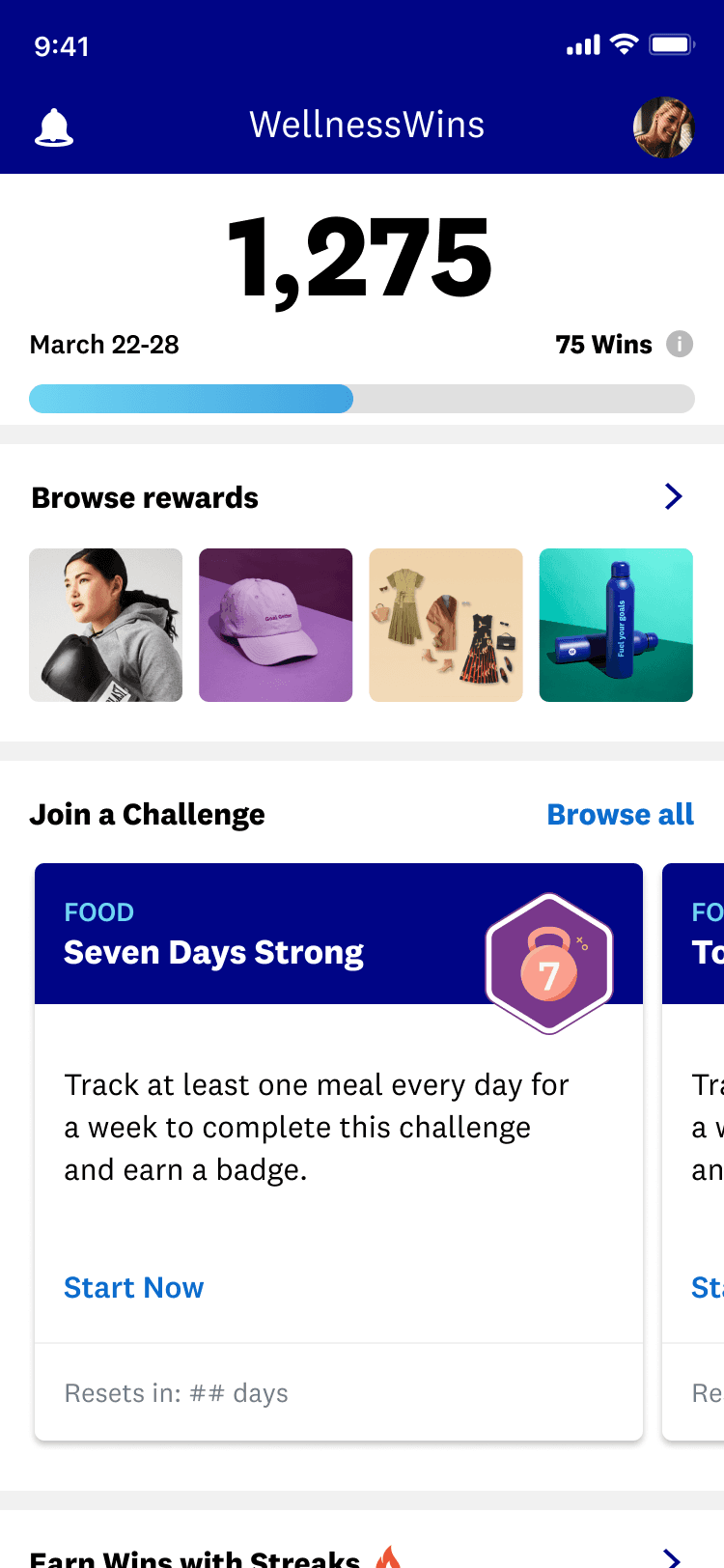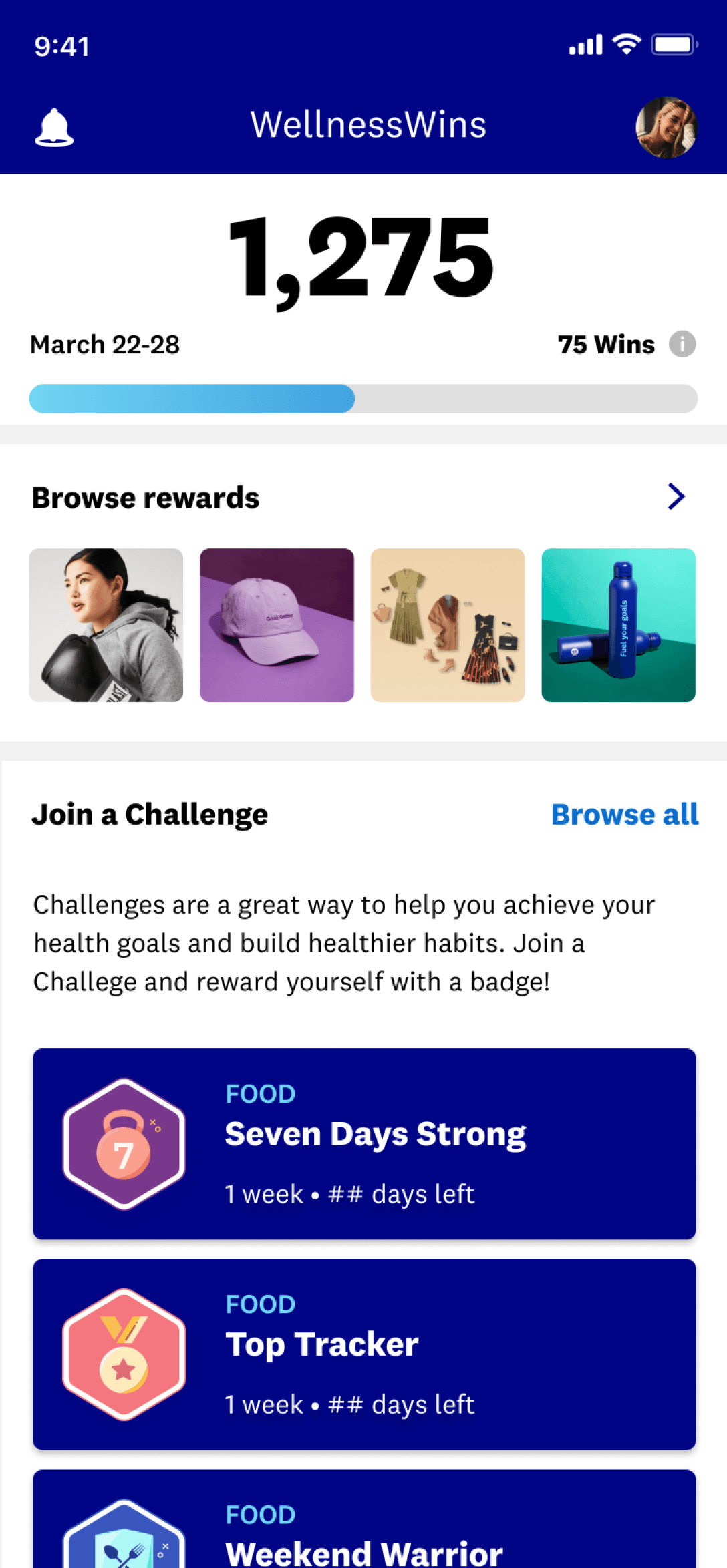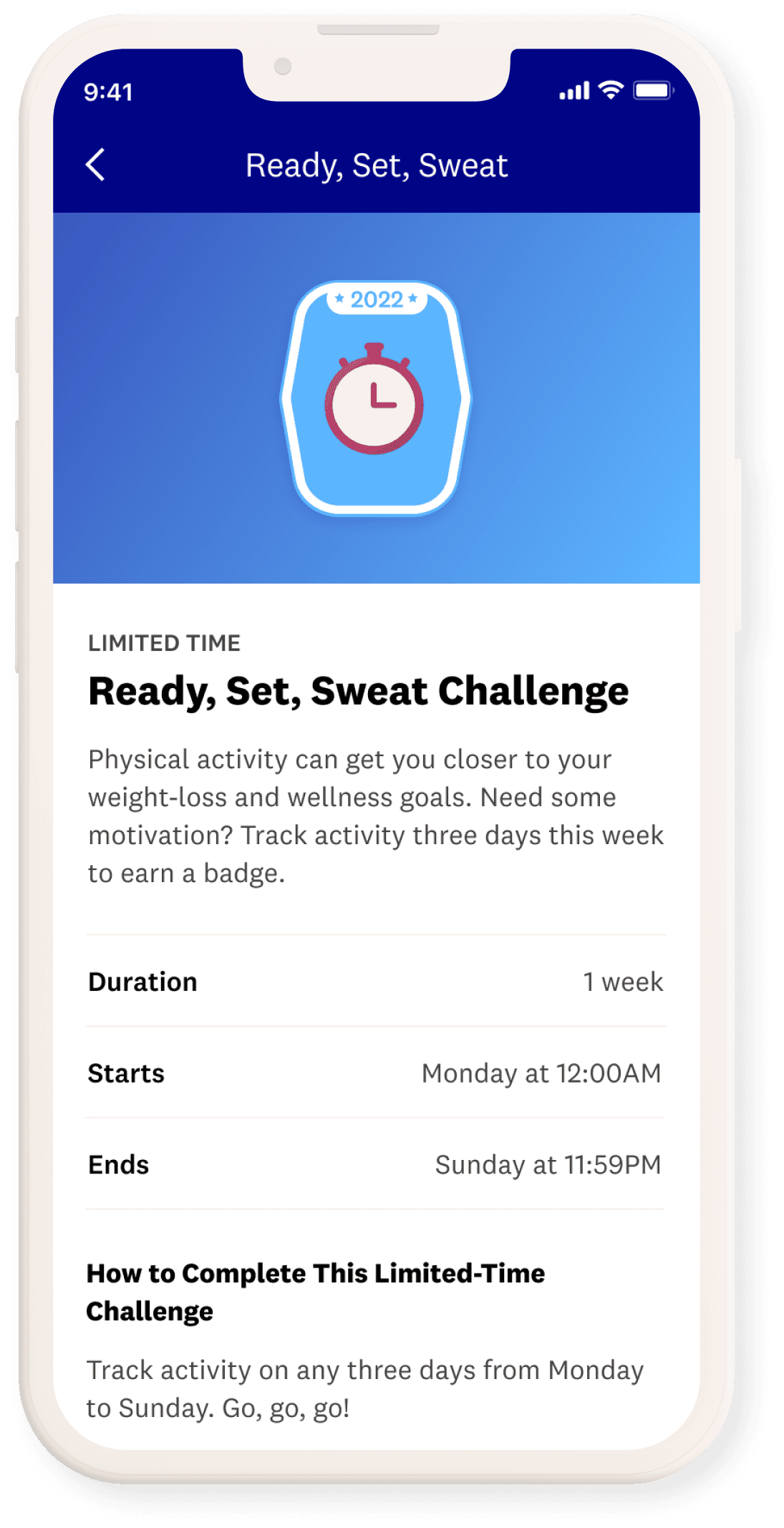Collaborated closely with cross-functional teams including Product, Engineering, Science, and Data to design and launch the WW Challenges feature
Led brainstorming sessions with Engineering to ensure feasibility and alignment of design concepts with technical constraints.
Partnered with Product and Marketing to align design direction with the product vision and brand strategy
Utilized A/B testing to evaluate the effectiveness and impact of different design variations on user engagement and behavior
Launched July 2022 on iOS and Android in five countries.
My role
Based on previous research, consistent engagement, weight loss difficulty, and accountability are common obstacles for WW members. Recognizing these challenges, we sought to create a solution that not only addressed them but also provided a motivating and enjoyable experience. That's where Challenges come in.
We understood that encouraging members to track their meals diligently played a crucial role in their success. With Challenges, we saw an opportunity to make the tracking process more than just a task—it became a fun and engaging experience that motivated members to take charge of their weight loss goals.
Overseeing MVP launch
Building upon the initial phase of work, I collaborated closely with both Product and Engineering to ensure the successful launch of our MVP, which featured three food tracking challenges. This involved conducting Design UAT (User Acceptance Testing) and effectively communicating the features and benefits of Challenges to the wider WW organization.
1.5
35%
22%
Post-launch improvements
Following the successful launch, my Product Manager and I identified key areas for post-MVP improvements and enhancements. By prioritizing these fast-follow initiatives, we aimed to optimize the Challenges experience for WW members, continually improving engagement and delivering a seamless user journey. Our collaborative efforts allowed us to iterate on the Challenges based on user feedback and data insights, ensuring that we consistently met and exceeded Member expectations.
Enhancing the visual design and hierarchy
In the first phase, due to time constraints, the design team was limited in exploring various visual design and hierarchy options. Building upon initial explorations, I created several different design options to take into A/B testing. This involved testing different visual styles and color palettes within our design system.
The iterative process aimed to strike a balance between aesthetics and functionality, resulting in a visually appealing interface with improved hierarchy and usability. Among all of the different variants, Variant 01 performed the best out of the four.

Variant 01
Content heavy where improvement is focused on information hierarchy and visual design. Also includes a "Start Now" CTA.

Variant 03
Similar to variant 02, with the addition of content to the card to explain what Challenges are

Variant 02
Reducing content and refining visual design
Variant 04
Introduction of an "intro challenge card" explaining challenges, with the rest of the flow following variant 01.

Introducing activity challenges
After making initial improvements, I was given the responsibility of developing new Challenges to introduce more variety for our Members. Recognizing the significance of tracking physical activity for overall health and wellness, we collaborated closely with our Science team to explore different possibilities for Activity challenges. To provide greater flexibility, they suggested implementing Activity Challenges based on tiers of minutes. As a result, we introduced three new challenges:
These challenges aimed to inspire and engage our Members in achieving their activity goals while accommodating their individual preferences and lifestyles.
Learnings from our three Activities Challenges
01
Get moving (bronze)
Track a minimum of 70 minutes of activity, equivalent to 10 minutes
per day.
02
Level up (silver)
Track at least 210 minutes of activity, or 30 minutes per day
03
Can’t stop (gold)
Track a minimum of 420 minutes of activity, equivalent to 60 minutes
per day
To create a comprehensive repository of Challenges, our team recognized the importance of understanding the competitive landscape and gaining insights from other companies. Through consultation with our Gamification Subject Matter Expert (SME), we discovered the effectiveness of “live service events” or real-time events tied to specific goals and incentives. The purpose of this competitive assessment was to examine a range of competitors and their organizational and design approaches to live services.
By thoroughly analyzing and drawing inspiration from these diverse competitors, we aimed to enhance our understanding of live service events and incorporate valuable insights into the development and design of our Challenge offerings.
01
Direct
Companies that are in the health industry/space
02
Analogous
Companies in a tangential domain
03
Perceptual
Companies in a different, seemingly unrelated domain that can provide inspiration
Key themes
01
Live service events contribute to a larger journey or mission, reinforcing progress towards daily, weekly, and monthly goals.
Tie to a greater mission
Design consideration
Outline mission steps and set early expectations for user success.
03
Gently encourage users to restart without shaming or guilt, providing tangible ways to regain progress.
Give help when off track
Design consideration
Guide users with practical steps to get back on track and make meaningful strides towards their goals.
02
Offer achievable goals at the start to create a sense of accomplishment and motivate new or returning users.
Provide easy ‘wins’ early on
Design consideration
Ensure wins are simple, attainable, and build towards greater goals for sustained engagement.
04
Allow users to personalize their experience by selecting live service events that align with their interests and preferences.
Empower with choice
Design consideration
Offer a diverse range of event options catering to different interests and preferences for user empowerment.
Brainstorming new Challenges
After sharing the themes gained from the competitive assessment with Product and Engineering, I led a brainstorming session to generate ideas for Challenges. During this collaborative session, the group generated a multitude of ideas, resulting in 26 ideas. From these ideas, we selected two concepts to further develop and refine.
The team then evaluated the feasibility of each concept from an engineering and quality assurance perspective. After careful consideration of technical constraints and available resources, we determined that implementing a series of limited-time Challenges aligned with New Year resolutions was the most viable concept to pursue.
A “Fresh Start” to the new year
To kick off the New Year, we have launched two (2) limited-time Challenges that members can join to jump start their journey with WW or get back on track. These Challenges are designed to provide support and guidance to both new and existing members in achieving their wellness goals for the new year.
Members will track breakfast every day for seven (7) days. Upon completion they will earn a badge.
Why is this important?
Ready, Set, Sweat Challenge
Members will track any activity 3 times in a seven day period. Upon completion they will earn a badge.
Why is this important?
From our Drivers of Members’ Success Research, early activity is an early sign of later success. This Challenge is easily attainable and will help Members form a habit.
Reflections
Co-designing with Engineering
Throughout the WW Challenges project, one of the key learnings was the significance of cross-functional collaboration, particularly with the Engineering team. By involving them early in the process, we leveraged their expertise and ensured that the design concepts we proposed were feasible and aligned with technical constraints. Brainstorming sessions with Engineering not only fostered a sense of shared ownership but also helped build a solid foundation for the project's success.
Partnering with Product and Marketing
Close collaboration with Product and Marketing helped align design direction with the product vision and brand strategy. Working together, we prioritized features based on Member needs and strategically positioned the Fresh Start Challenge to resonate with our target audience.
Laddering up to our north star vision
As a designer, it was essential to consider the long-term vision and roadmap for WW Challenges beyond the MVP and fast-follow iterations. Future-proofing the designs meant ensuring that they were aligned with the overall direction of the product and laddered up to our north star vision. This required careful consideration of scalability, flexibility, and extensibility in the design decisions made. By collaborating closely with Product and Engineering, the team created a Challenge framework that can accommodate future enhancements and iterations.










